Cleaner Pyrolysis
- By Sharad Matade
- July 04, 2025
Paul Lloyd: “Farrel Pomini’s core business lies in supplying processing equipment for the plastics and petrochemical industries."
Pyrolysis has long been associated with pollution and inefficiency, particularly in developing markets where outdated methods dominate. However, technological advancements and a stronger push for circularity are transforming this perception. HF Group, through its subsidiary Farrel Pomini and WF Recycle-Tech, is at the forefront of this shift, introducing a continuous pyrolysis system that promises cleaner and more efficient tyre recycling. Unlike traditional batch processing, its technology ensures consistent output, better resource recovery and reduced emissions.
Pyrolysis has always been considered to be a dirty business. However, with the changes in technology and the increasing hunt for circularity across the tyre industry, businesses are attempting to redefine the age-old tyre recycling process and remove the malice associated with it.
Farrel Pomini is one such entity with the HF Group that is attempting to make pyrolysis cleaner. WF Recycle-Tech, established in 2013, started commercial operations in 2022 with selling its first pyrolysis unit in 2024, slated to be operational in 2026.
Speaking to Tyre Trends, President Paul Lloyd said, “Farrel Pomini’s core business lies in supplying processing equipment for the plastics and petrochemical industries. While its continuous mixer can be used for rubber applications, it is primarily designed for plastic masterbatches and compounds. The company operates across multiple divisions with its plastics compounding equipment focusing on niche applications for highly filled and temperature-sensitive materials. Although the plastics market is significantly larger than the rubber sector, Farrel Pomini targets specialised segments within it. Expanding its footprint in sustainability, the company has developed recycling systems for both plastics and rubber. The end-of-life tyre recycling solution was developed in collaboration with its group company, WF Recycle-Tech.”
Tyre pyrolysis has long been regarded as a polluting industry, particularly in developing countries where unregulated plants often operate at night to evade environmental scrutiny. In markets like India, many such facilities shut down due to non-compliance, reinforcing the industry’s reputation as a ‘dirty business’.
Lloyd further explained, “In Europe, the focus is shifting towards sustainability, driving innovation in pyrolysis technology. Traditional methods relied on large kilns, where tyres were burned with external heat over extended periods. The process was inefficient, labour-intensive and environmentally damaging, requiring extensive manual cleanup.
HF Group has taken a different approach, developing a continuous pyrolysis system that eliminates these challenges.”
Instead of batch processing, the system ensures a constant flow of material, allowing for the controlled capture of gases, liquids and solid outputs. The process begins with pre-grinding tyres into metal-free rubber crumb (6–20 mm), which is then fed into the machine via a hopper. Operating at a capacity of 1,500 kilogrammes per hour, the system requires only continuous material input while automatically managing output streams including recovered oil and gas.
Apropos to the pain points that the company wanted to address, he noted, “Over the past decade of developing this solution, several key learnings and priorities emerged. First and foremost, the goal was to create an efficient pyrolysis system that could consistently process tyre waste at an industrial scale. Second, the decision to develop a continuous rather than batch-based system was fundamental as continuous pyrolysis offers greater consistency, scalability and efficiency. Third, integrating a continuous mixer in the pre-processing stage became a major focus as it significantly improved the homogeneity and quality of the output materials. Finally, optimising the recovered output, particularly recovered carbon black, became the primary objective. Initially, the project was focused on tyre-derived oil (TDO), but as the market evolved, the emphasis shifted to producing the highest-quality rCB, aligning with upcoming ASTM standards and stringent industry requirements.”
By integrating advanced processing controls, the solution ensures cleaner, more efficient pyrolysis, positioning itself at the forefront of sustainable and cleaner tyre recycling.
THE OUTPUT
HF Group’s expertise in mixing technology creates a natural synergy between its traditional business and its expansion into tyre recycling. While the company is known for its tyre curing and rubber mixing solutions, it also has a plastics mixing division; this same mixing technology plays a crucial role in its pyrolysis process.
The recycling system starts with tyre crumb, which is fed into a high-shear Farrel Continuous Mixer originally designed for plastics processing. The mechanical shear heating raises the temperature of the material to 330 degrees Celsius. This ensures uniform heating before the material enters the pyrolysis chamber, where temperatures increase to between 520 degrees Celsius and 580 degrees Celsius. The continuous system eliminates inefficiencies seen in traditional batch pyrolysis, where prolonged heating cycles lead to higher energy consumption and inconsistent output.
Material recovery is a key advantage of the system. For every tonne of tyre crumb processed, approximately 50 percent is converted into pyrolysis oil, yielding 550–570 litres. Around 40 percent becomes recovered carbon black (rCB), a critical raw material that can replace virgin carbon black in industrial applications. The remaining 10 percent is gas, which can be used to power the system, further improving energy efficiency.
Beyond throughput, the system’s design significantly reduces overall energy demand. Mechanical shear heating minimises reliance on external thermal energy, while the continuous process prevents heat loss and optimises fuel efficiency.
Additionally, rCB from the pyrolysis process requires 60–70 percent less energy to refine, further enhancing sustainability.
“Pyrolysis fundamentally relies on heat and time in the absence of oxygen. Under these conditions, tyres thermally degrade, breaking down into vapour, which is condensed into oil and a solid residue, which is now widely used as recovered carbon black (rCB). This output can be further refined for industrial applications, creating a circular economy within the rubber industry,” explained Lloyd.
CHALLENGING INTEGRATION
The primary challenge for tyre manufacturers in adopting rCB is achieving performance characteristics comparable to virgin carbon black. Similarly, tyre pyrolysis oil must meet stringent quality standards to serve as a feedstock for high-value applications beyond just fuel. The company’s continuous pyrolysis system addresses these concerns by enhancing the quality and usability of both outputs.
“In the case of tyre pyrolysis oil, if used as a fuel, the calorific value may vary slightly, but it remains a viable option. However, its greater potential lies in serving as a feedstock for sustainable carbon black or even virgin carbon black production. The consistency of the oil’s composition determines its suitability for high-end applications, making process control a critical factor,” noted Lloyd.
He added, “For rCB, higher quality directly translates into increased usability across different applications. While rCB will never completely replicate virgin carbon black, superior grades enable a higher substitution rate. In some cases, a high-quality rCB can replace up to 30 percent of virgin carbon black, whereas lower-quality alternatives may only allow a 15 percent substitution. This increased usability not only enhances sustainability but also raises the material’s commercial value.”
HF Group’s rCB, produced through its WF Recycle-Tech process, has been extensively tested across multiple industries. It has demonstrated strong performance in plastics masterbatch applications, technical rubber goods and even tyre manufacturing. One major tyre producer has already validated its suitability for substitution in new tyres, underscoring its industry acceptance.
A key differentiator of the process lies in its patented two-stage pyrolysis system. While continuous pyrolysis itself is well established, HF Group’s innovation stems from its integration of a high-shear Farrel Continuous Mixer in the first stage.
This approach ensures uniform heating, eliminates direct heat exposure and optimises the pyrolysis reaction in the second stage. The result is a more efficient process that yields higher-quality recovered carbon black and cleaner tyre pyrolysis oil.
PERSEVERING THROUGH LIMITATIONS
The primary limitations of the system, Lloyd noted, revolve around scalability, operational efficiency and material consistency. The current processing capacity of 1,500 kilogrammes per hour is relatively low. Scaling up production rates while maintaining efficiency and reliability is an ongoing challenge. The key challenge is ensuring long-term operational stability and optimising run times.
Another significant factor is feedstock variability, particularly in markets like India, where used tyres from different sources such as passenger cars, trucks and buses are often mixed without segregation. The ideal scenario would involve processing a uniform type of tyre with a consistent rubber composition, but in reality, recycling operations must work with what is available.
“There are two main approaches to addressing this viz-a-viz meticulous sorting, which ensures consistency but is time-consuming and costly, or strategic blending, which creates a stable output by balancing material variations. The current system has been designed to handle diverse feedstocks without sorting, using a consistent blend of tyres to produce a predictable output,” said Lloyd.
In the long term, technological advancements such as artificial intelligence or tracking mechanisms for tyres could enhance sorting processes, making recycling operations more efficient. However, for now, the focus remains on refining the system to handle real-world feedstock conditions while delivering high-quality outputs. The continuous processing system also provides flexibility to adjust parameters and optimise results, making it a robust solution even in environments where feedstock quality is unpredictable.
MARKET TALK
The return on investment for pyrolysis systems is quite favourable, but it carries risks, especially in the early stages. A well-managed system operating efficiently for 6,000–7,000 hours per year, with a stable feedstock supply and consistent product quality, can generate strong financial returns, explained the executive.
However, challenges arise if there are interruptions in material supply, equipment downtime or fluctuations in product quality. These factors introduce uncertainty, which can make securing financing more difficult. That said, the market for TDO and rCB is growing, providing ample opportunities for revenue. Companies that can differentiate its output and meet quality standards can command premium prices, further improving ROI.
The market focus for HF Group’s advanced pyrolysis solutions primarily includes recyclers looking to add more value to their processes, material users such as tyre manufacturers and technical rubber companies seeking sustainable raw materials and new businesses emerging in response to industry needs.
“In the US and Europe, there is a growing entrepreneurial push to bridge the gap between traditional recycling and the sustainability requirements of the tyre industry. However, in markets like India and other parts of Asia, the challenge lies in shifting perceptions. Many existing pyrolysis operations use older-generation systems. The transition to modern, cleaner and more efficient systems requires education, proof of performance and financial support. Despite these challenges, India remains a strong market for HF, as the industry values high-quality technology and is willing to invest in the best solutions once the benefits are clearly demonstrated,” informed Lloyd.
Over the next five years, the company’s primary goal is to establish a proven track record with the first full-scale pyrolysis system, demonstrating its performance, reliability and efficiency. Once this is achieved, the focus will shift to helping potential customers secure financing by reducing perceived risks, making it easier for them to invest in the technology.
Alluding to the next phase of development, Lloyd informed, “The next phase of development focuses on three main areas. The first priority is industrialising the system to ensure it operates efficiently, consistently and reliably over long production cycles. This transition from pilot-scale to full-scale manufacturing is where HF Group’s expertise in engineering advanced processing equipment comes into play. Secondly, efforts are underway to further refine the pyrolysis reaction to enhance output quality and efficiency. Lastly, ongoing research and development is focused on post-processing improvements, particularly the removal of ash from recovered carbon black to increase its usability in high-performance applications.” n
- Global Platform For Sustainable Natural Rubber
- GPSNR
- Natural Rubber
- Sustainability
- Rubber Supply Chain
- Assurance System
- Circular Economy
- Responsible Sourcing
- Smallholders
- Supply Chain Transpa
GPSNR Marks Milestone At Seventh General Assembly
- By TT News
- December 17, 2025

Members of the Global Platform for Sustainable Natural Rubber gathered for the organisation’s seventh General Assembly, marking what it described as a pivotal year for accountability and member-led sustainability across the natural rubber value chain.
A key development in 2025 was the launch of GPSNR’s risk-based Assurance System, which sets sustainability expectations, introduces independent verification and aims to drive continuous improvement beyond regulatory compliance. The system was developed collaboratively over several years and is intended to provide a globally applicable framework for sustainability in the sector.
At the assembly, end-user companies reaffirmed their support for the Assurance System and agreed on a structured pathway towards full implementation within their category.
“This year marks a turning point for GPSNR,” said Stefano Savi, chief executive of GPSNR. “The Assurance System gives our members a shared and trusted foundation for demonstrating progress across the value chain.”
Members also reflected on the first year of the Shared Investment Mechanism, a model that allows manufacturers to share the costs of large-scale capacity-building projects. The initiative is intended to deliver long-term benefits for upstream participants, particularly smallholder producers.
“Sustainability cannot be achieved by one part of the value chain alone,” Savi said. “By investing together, our members are enabling more inclusive and impactful outcomes worldwide.”
Looking ahead to 2026, GPSNR said it would focus on supporting the implementation of the Assurance System through data collection, member learning programmes, and stakeholder dialogue, to ensure the framework reflects operational realities and different business models.
The assembly concluded with members reiterating their commitment to building more equitable, resilient and sustainable natural rubber supply chains.
- Tire Recycling Foundation
- Circle Of Change Awards
- Tyre Recycling
- End-Of-Life Tyres
- Circular Economy
- Sustainability
- Recycled Tyre Materials
- Tire Recycling Conference
- Value Chain Collaboration
- Innovation
Tire Recycling Foundation opens nominations for inaugural Circle of Change Awards
- By TT News
- December 16, 2025
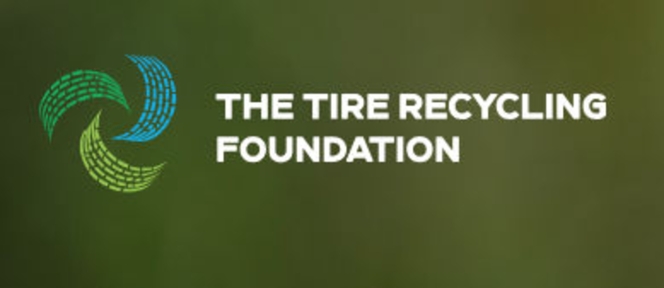
The Tire Recycling Foundation has opened nominations for its first Circle of Change Awards, aimed at recognising organisations, teams and individuals advancing innovation and sustainability across the tyre recycling sector.
Nominations opened on 15 December and will be accepted until 8 February 2026. The awards will honour contributions spanning tyre recycling technologies, end-use market development and leadership in circular economy practices.
“The Circle of Change Awards will serve as a powerful way to recognise national visionaries and changemakers who have shaped the trajectory of the full tyre recycling value chain over the past two decades,” said Anne Forristall Luke, president of the Tire Recycling Foundation board. “We are thrilled to recognise trailblazers making a lasting impact on end-of-life tyre (ELT) recycling and the circular economy.”
Four award categories will be presented at the 10th Tire Recycling Conference, scheduled to take place in Denver, Colorado.
“By spotlighting the collective progress being made in tyre recycling, the Foundation hopes these inaugural awards will inspire and fuel accelerating momentum in exciting new markets for recycled tyres,” said Stephanie Mull, executive director of the Tire Recycling Foundation.
The Innovation in End-Use Technology Award will recognise technologies, products or processes that use recycled tyre rubber in new ways, with a focus on technological advancement, commercialisation and sustainability impact.
The Circular Economy Trailblazer Recognition, State Leadership in Tire Market Innovation category will honour state agencies or statewide programmes that demonstrate leadership and measurable impact in advancing tyre recycling within a circular economy framework.
The Market Development Excellence Award will recognise efforts to expand end-use markets for tyre-derived materials through education, policy, marketing or advocacy, with an emphasis on measurable market growth and long-term strategy.
The Value Chain Collaboration Award will acknowledge partnerships across the tyre recycling value chain that deliver measurable improvements in efficiency, economics or environmental performance.
The foundation said organisations and individuals that have made significant contributions to tyre recycling or developed innovative solutions for tyre-derived materials are encouraged to apply. Award recipients will be allowed to showcase their achievements and inspire further progress across the sector.
- German Rubber Industry Association
- German Rubber Industry
- wdk
- Rubber Industry
- Tyre Recycling
- End-Of-Life Tyres
wdk Calls For Risk-Based Approach To Unlock Tyre Recycling Potential
- By TT News
- December 15, 2025
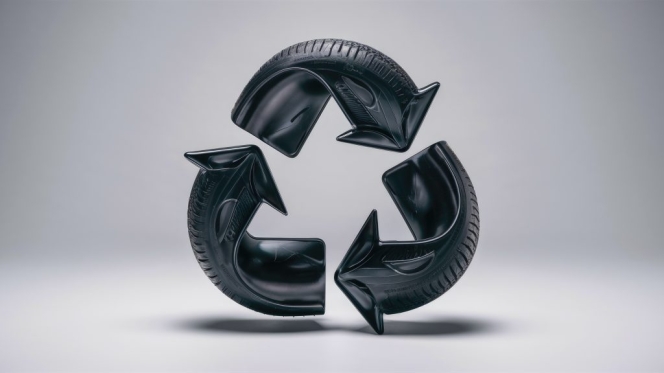
The German Rubber Industry Association (wdk) has called for enhanced policies to unlock the full potential of tyre recycling in Germany. While acknowledging the existing successes of the circular economy in this sector, Stephan Rau, Technical Director of wdk, emphasised that significant untapped opportunities remain. Last year alone, Germany generated 533,000 tonnes of used tyres, with nearly 70 percent kept in circulation through reuse, retreading and recycling. The wdk advocates for a stronger framework to improve these material flows and boost the market for recycled materials.
A central pillar of the wdk’s position is the demand for a modern, science-based evaluation of recycled rubber products. Over 200,000 tonnes of used tyres are processed annually into granules and rubber flour, vital secondary raw materials for sustainable manufacturing. However, Rau argues that their broader market success is hindered by outdated assessment methods. The association urgently recommends a risk-based approach that evaluates chemical ingredients based on their actual bioavailability and migration, rather than their mere presence. This perspective, now supported by the German Federal Institute for Risk Assessment (BfR), necessitates establishing binding limit values determined through migration analysis to ensure both safety and commercial viability.
Furthermore, the wdk highlights a critical gap in the complete monitoring of tyre material flows. A notable proportion of used tyres exit Germany and Europe for processing, depriving domestic recyclers of valuable secondary raw materials. To address this leakage and strengthen the circular economy, Rau stresses the need for comprehensive tracking of all end-of-life tyres. The association’s commitment is reflected in its patronage of the Alliance for Future Tyres (AZuR), a European network of nearly 100 partners from industry, trade and science dedicated to advancing a sustainable tyre circular economy across all segments.
- Hi-Green Carbon
- ISCC EU Certification
- Sustainability
- Supply Chain Integrity
- Recovered Carbon Black
- Tyre Pyrolysis Oil
Hi-Green Carbon Secures ISCC EU Certification
- By TT News
- December 13, 2025
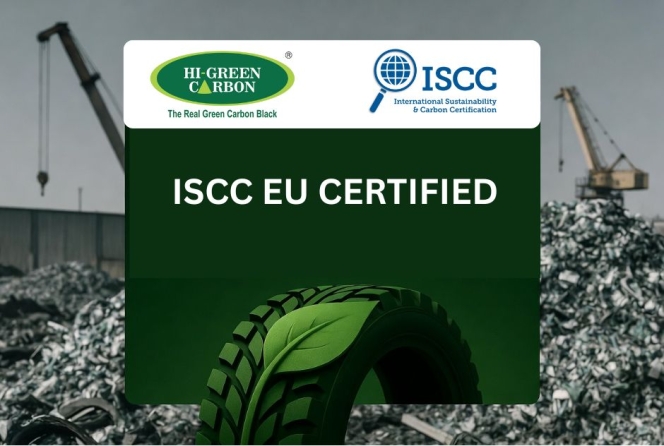
Hi-Green Carbon Limited has achieved a significant milestone in its sustainability operations by securing the prestigious ISCC EU Certification. This globally recognised endorsement highlights the company's adherence to rigorous international standards for environmental responsibility and supply chain integrity.
The certification verifies full compliance across the entire production process, from sourcing to delivery, emphasising traceability and operational transparency. It specifically validates the sustainable production of the company's key outputs, including recovered carbon black (rCB) and tyre pyrolysis oil (TPO). This accomplishment underscores Hi-Green Carbon’s commitment to circular economy principles and positions it as a leader in the production of sustainable industrial materials.
The company statement read: “This milestone not only strengthens our sustainability commitment but also deepens our collaboration with you, our valued clients and partners. With ISCC-certified products, you can have greater confidence in the environmental integrity and long-term sustainability of your supply chain, supporting your own green initiatives and carbon-reduction goals. We extend our sincere gratitude to our clients, partners, and team members for their consistent support and trust. Together, we are driving positive change and contributing to a cleaner, greener, and more circular future.”


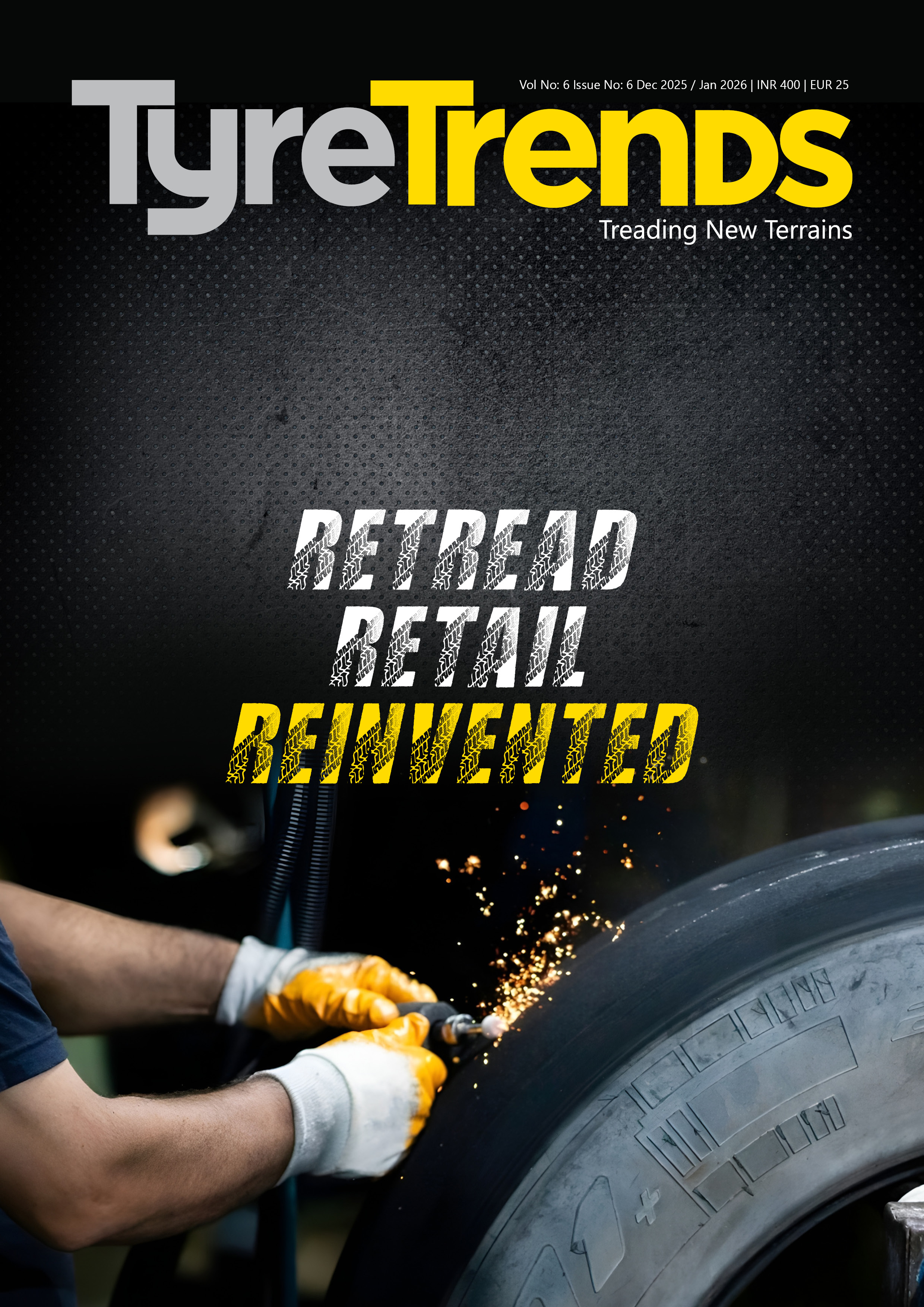



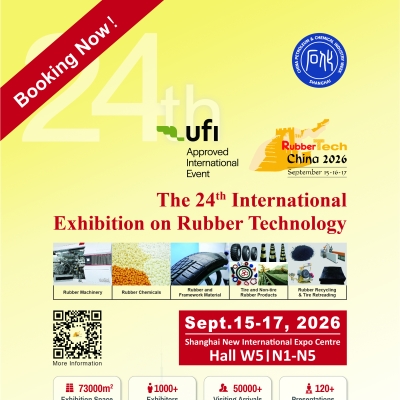
Comments (0)
ADD COMMENT